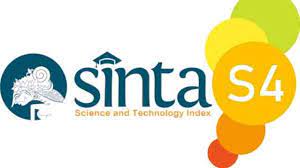PENGGUNAAN MODEL DISCOVERY LEARNING UNTUK MENINGKATKAN KOMPETENSI BELAJAR MATEMATIKA SISWA MATERI BANGUN RUANG SISI LENGKUNG
DOI:
https://doi.org/10.51878/science.v2i1.1074Keywords:
Model Discovery Learning, Kompetensi Belajar Matematika, Bangun Ruang Sisi LengkungAbstract
This study aims to describe the level of competence of learning outcomes in learning mathematics with the material of Constructing Curved Side Space by using the Discovery Learning learning model in class IX B students of SMP Negeri 16 semester II (two) for the 2020/2021 academic year. The problem that is the subject of discussion is whether through the Discovery Learning model can improve competence in learning to construct curved side spaces for class IX B SMP Negeri 16 second semester of the 2020/2021 academic year? The research method is in the form of Classroom Action Research (CAR) with 2 cycles, each cycle includes 4 stages, namely planning, action, observation and reflection. Data collection techniques are tests and observations with data collection tools in the form of written test questions and observation sheets which are validated by data through triangulation. The results of the study showed that the competence of learning outcomes in mathematics with curved side spaces for class IX B SMP Negeri 16 second semester of the 2020/2021 academic year increased from an average of 68.84 with 9 students or 26.47% in the pre-cycle to an average of 70. with 19 students or 55.88% in the first cycle and the second cycle to an average of 76 with 29 students or 85.29% complete the KKM.
ABSTRAK
Penelitian ini bertujuan untuk mendeskripsikan tingkat kompetensi hasil belajar dalam pembelajaran matematika materi Bangun Ruang Sisi Lengkung dengan menggunakan model pembelajaran Discovery Learning pada siswa kelas IX B SMP Negeri 16 semester II (dua) tahun pelajaran 2020/2021. Permasalahan yang menjadi pokok bahasan adalah apakah melalui model Discovery Learning dapat meningkatkan kompetensi dalam pembelajaran bangun ruang sisi lengkung siswa kelas IX B SMP Negeri 16 semester dua tahun pelajaran 2020/2021?. Metode penelitian berupa Penelitian Tindakan Kelas (PTK) dengan 2 siklus, masing- masing siklus meliputi 4 tahap yaitu perencanaan, tindakan, pengamatan dan refleksi. Teknik pengumpulan data dengan tes dan observasi dengan alat pengumpulan data berupa soal tes tulis dan lembar observasi yang divalidasi data melalui triangulasi. Hasil penelitian menunjukkan kompetensi hasil belajar matematika materi bangun ruang sisi lengkung siswa kelas IX B SMP Negeri 16 semester dua tahun pelajaran 2020/2021 meningkat dari rata-rata 68,84 dengan 9 siswa atau 26,47% pada pra siklus menjadi rata-rata 70 dengan 19 siswa atau 55,88% pada siklus I dan siklus II menjadi rata-rata 76 dengan 29 siswa atau 85,29% tuntas KKM.
Downloads
References
Bambang Supriyanto, 2014. Penerapan Discovery Learning Untuk Meningkatkan Hasil Belajar Siswa Kelas Vi B Mata Pelajaran Matematika Pokok Bahasan Keliling Dan Luas Lingkaran Di Sdn Tanggul Wetan 02 Kecamatan Tanggul Kabupaten Jember. Pancaran, Vol. 3, No. 2, hal 165-174, Mei 2014.
Budiningsih, Asri. 2015. Belajar dan Pembelajaran. Jakarta. PT Asdi Mahasatya.
Dahar, R. W. (1989). Teori-Teori Belajar. Jakarta: Erlangga.
Dalyono. (1996). Psikologi pendidikan. Jakarta: Rineka Cipta. Depsiknas.
Gagne , R.M., & Briggs, L.J. 1979. Principle of Instructional Design. New. Yorks.
Malik, Oemar. 2011. Proses Belajar Mengajar, Jakarta: PT Bumi Aksara.
Markaban. 2016. Model Pembelajaran Matematika dengan Pendekatan Penemuan. Terbimbing. Yogyakarta : Departemen Pendidikan Nasional.
Peraturan Menteri Pendidikan Dan Kebudayaan Republik Indonesia. Nomor 24 Tahun 2016. Tentang. Kompetensi Inti Dan Kompetensi Dasar Pelajaran.
Syah. 2004. Psikologi Pendidikan dengan Pendekatan Baru. Bandung: PT Remaja. Rosdakarya.
Slavin, E. Robert. 1997. Educational Psychology Theory and Practice. USA: Paramoun Publishing.
Downloads
Published
How to Cite
Issue
Section
License
Copyright (c) 2022 SCIENCE : Jurnal Inovasi Pendidikan Matematika dan IPA

This work is licensed under a Creative Commons Attribution-NonCommercial-ShareAlike 4.0 International License.















